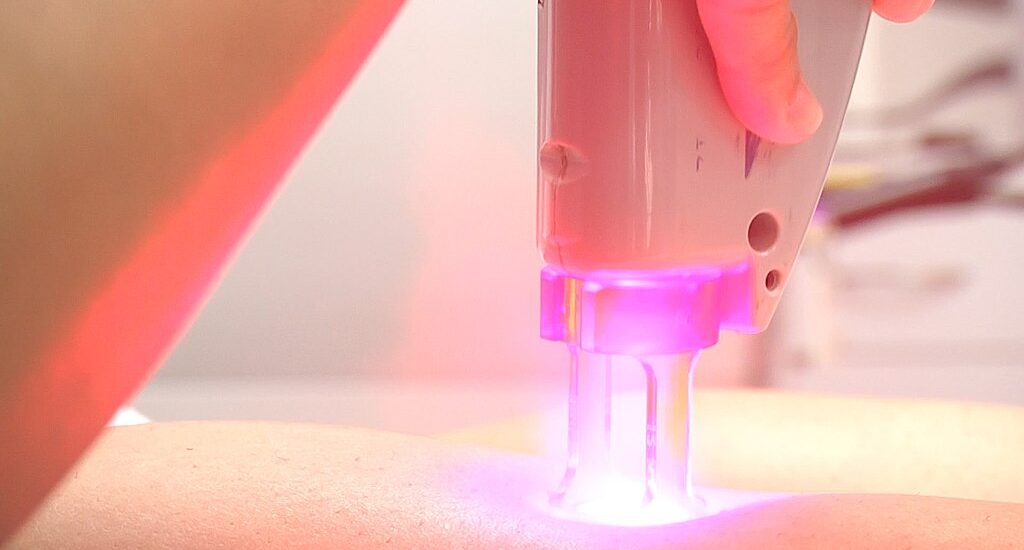If you’re experiencing bumpy skin after laser hair removal, you’re likely filled with questions and concerns. This guide is here to walk you through everything you need to know to manage and understand this common side effect.

Table of Contents
Is It Normal to Get Bumpy Skin After Laser Hair Removal?
The quick answer is yes, it is generally normal to experience some bumps following laser hair removal treatment. According to the American Academy of Dermatology (AAD), this is a common side effect that occurs for many individuals.
The laser works by targeting melanin in the hair follicles, generating heat and thereby leading to temporary irritation of the surrounding skin. While the reaction might look worrisome, it’s usually the skin’s natural response to the procedure. Some people may experience minor discomfort along with the bumps, such as a tingling or burning sensation.
What Causes Bumpy Skin After Laser Hair Removal?
The primary cause of bumps after laser hair removal is the heat generated by the laser as it targets melanin in the hair follicles. This process is essentially an inflammatory response by the skin as it reacts to the heat.
Another reason for the bumps could be the skin’s sensitivity to the treatment. Factors like skin type, laser intensity, and pre-existing skin conditions can influence how your skin reacts. However, it’s generally temporary and considered a common response to the heat generated by the laser.
How Long Do Bumpy Skin After Laser Hair Removal?
The duration for which the bumps last can vary from person to person, but typically they subside within a few hours to a couple of days. The transient nature of these bumps usually means they’re not a cause for concern.
However, if you find that the bumps persist for more than 48 hours, that might be indicative of a problem requiring medical attention. Such lingering bumps could be signs of an allergic reaction, infection, or other complications.
Check out these other articles…
What Not To Do After Laser Hair Removal: 4 Mistakes To Avoid
Can I Use Tend Skin After Laser Hair Removal? Quick Answer
How to Get Rid of Black Spots After Laser Hair Removal
Rash on Skin After Laser Hair Removal: Easy Remedies
Skin Damage from Laser Hair Removal: Comprehensive Guide
Is It Normal to Have Red Bumpy Skin After Laser Hair Removal?
Yes, the occurrence of red bumps is generally considered a sign of temporary irritation. These red bumps are your skin’s natural response to inflammation and heat.
However, there are instances when prolonged redness could signal an infection or allergic reaction. If the red bumps become painful, increasingly red, or show signs of pus, that could indicate an issue requiring medical intervention. The condition of the bumps and the duration for which they last are important indicators of whether they are normal side effects or signs of a problem.
Managing Red Bumpy Skin After Laser Hair Removal
If your skin is red and bumpy after treatment, there are various approaches you can take to alleviate discomfort. Applying a cold compress to the affected areas can help reduce swelling and redness.
Over-the-counter creams containing hydrocortisone may also provide relief by reducing inflammation. It’s essential to follow the manufacturer’s guidelines or consult your dermatologist before applying any medication. Other options could include aloe vera gel for its soothing properties. It is crucial to do a patch test for any topical application to ensure you’re not allergic.
When to Seek Professional Help
If you find that the bumps, redness, or irritation persist for more than 48 hours, it’s crucial to seek medical attention promptly. Delaying consultation with a healthcare provider could lead to complications like infections, scarring, or hyperpigmentation.
Furthermore, if the bumps become painful, increasingly red, or start showing signs of pus, these could be indicators of more severe issues requiring immediate medical intervention. In such cases, your dermatologist may prescribe antibiotics or antihistamines depending on the diagnosis.


